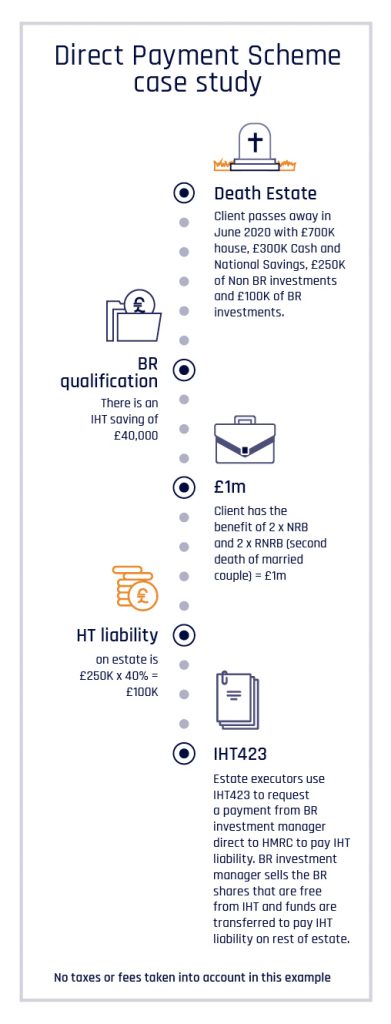This is an extract from the Adviser’s Guide to Business Relief, Second Edition. For the full guide, click here
Transfer by way of gift: For a gift to be fully exempt from IHT as a PET (Potentially Exempt Transfer), it must be transferred to the beneficiary at least seven years before the death of the donor. Technically, if the donor dies within seven years of gifting the BR investment, it is a failed PET. But, if the gift is in the form of a BR investment that has been held for at least two years by the donor, and the recipient of the gift continues to hold the BR qualifying assets until the earliest of the donor’s death or seven years, the gift will benefit from 100% IHT mitigation.
Failed PETS: For the purposes of the RNRB, failed PETs are not added back into the estate for RNRB purposes and any taper relief gained by way of the failed PET reducing the estate value below £2 million, the relief gained by avoiding the taper, is retained. (£1 relief lost for every £2 estate value above £2 million)
Transfer into trust: When BR qualifying assets (having been held for at least two years by the settlor) are settled into a discretionary trust during the settlor’s lifetime, the potential lifetime charge to IHT (usually 20%) is reduced to zero. Holdover Relief could be utilised in conjunction with BR here to defer any CGT otherwise arising on the gift of the shares into the trust.
Transfers benefitting from relaxation of the two year holding period: In the following specific circumstances (where a piece of legislation that ‘relaxes’ the two year ownership rules applies), Business Relief is still available if the transferor can not fulfil either of the two-year ownership criteria, if:
- They acquired the qualifying assets by gift, and
- When they acquired the qualifying assets, they were eligible for BR, and
- Either the previous or current transfer was made on death (The two year period of ownership condition may be set aside if an earlier transfer of value (which is or would have been eligible for BR, including an exempt transfer (e.g an inter-spouse transfer)) took place within two years and one of the transfers was made on death
Upon the death of an investor – options include encashment or share transfer:
Encashment: Proceeds of the sale of the BR-qualifying shares are paid to the executors for distribution to estate beneficiaries (which could include a will trust for future protection purposes.)
Transfer to surviving spouse: Where the individual is married or in a civil partnership, if they arrange for their shares to pass to their spouse or civil partner on death (inter-spouse transfer), this transfer will be exempt from IHT. In addition, the survivor will be treated as having held the shares from the original date of investment, rather than the date of death. In other words, the two-year period only has to be satisfied by a period of ownership between husband and wife or civil partners. (This does not apply to a lifetime transfer of BR qualifying shares.)
Transfer to non-spouse: Where the transfer is to someone other than a spouse or civil partner, the BRqualifying asset is deemed to have been owned from the date of death
On the death of the investor, the payment of cash proceeds to executors or the transfer of shares takes place once Probate has been granted, along with confirmation from HMRC that the value of the potentially BR-qualifying assets are outside of the charge to IHT.
The exception to this is when the manager is told to pay proceeds directly to HMRC to settle IHT liabilities on an estate. This is known as the Direct Payment Scheme and form IHT423 is used by the executors. Note, not all BR providers will facilitate this. It does not matter whether this is the first transfer or the second transfer, as long as they are not both lifetime transfers. One of the transfers must be on death.
Direct Payment Scheme
In order to accept instruction to make payment to HMRC in settlement of IHT liabilities, BR managers that facilitate the Direct Payment Scheme such as TIME, require, as a minimum: formal instructions from the executors of the will, proof of death, proof of identification of the executors of the will and a completed original IHT423 form. These requirements vary. Executors will also need an IHT reference number from HMRC at least 3 weeks before a payment is made. Further information is available at: https://www.gov.uk/paying-inheritancetax/deceaseds-bank-account

For a free download of the full Adviser’s Guide to Business Relief, Second Edition, click here
